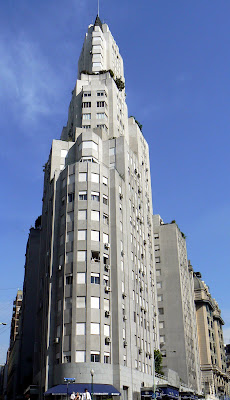
ELIZABETES IELA 10b
PART TWO - ART NOUVEAU
Art Nouveau is older and very different in style to Art Deco. It took its name from Samuel Bing's gallery, Maison de l'Art Nouveau, in Paris. In Central and Eastern Europe it is also known as Jugendstil or 'youth style'. One of its main influences was Japanese art, especially the woodcuts of Hokusai, and its main period was from the 1890s to the early 1900s, after Japanese prints appeared in Europe. It was especially popular in Northern Europe, with Latvia and Scotland being two of the countries with some of the finest examples of Art Nouveau architecture. It is characterized by non-geometric curves and swirls, and the facades of Art Nouveau buildings are usually decorated with floral designs, human figures and faces.
I have chosen two buildings to exemplify the style:
1/ Elizabetes iela 10b, Riga. Riga has over 750 Art Nouveau buildings, more than any other city in the world, and it was a visit there that got me really interested in this subject. The main reason is that one of the most prolific Art Nouveau architects, Mikhail Eisenstein (father of the film director Segei Eisenstein) lived there, and the building at Elizabetes iela 10b, built in 1903, is generally agreed to be his finest
2/ Pasajul Macca-Vilacrosse, Bucharest. This is a grand late nineteenth century, pedestrian thoroughfare, roofed with glass and wrought iron and lined with shops, cafes and restaurants. It has a typical Art Nouveau entrance, flanked by floral designs and human sculptures. It was designed by Catalan architect, Xavier Villacrosse, who studied in Paris. It is quite elegant and beautiful and when you see it, you will see why Bucharest was sometimes referred to as Little Paris.
PART ONE: ART DECO














